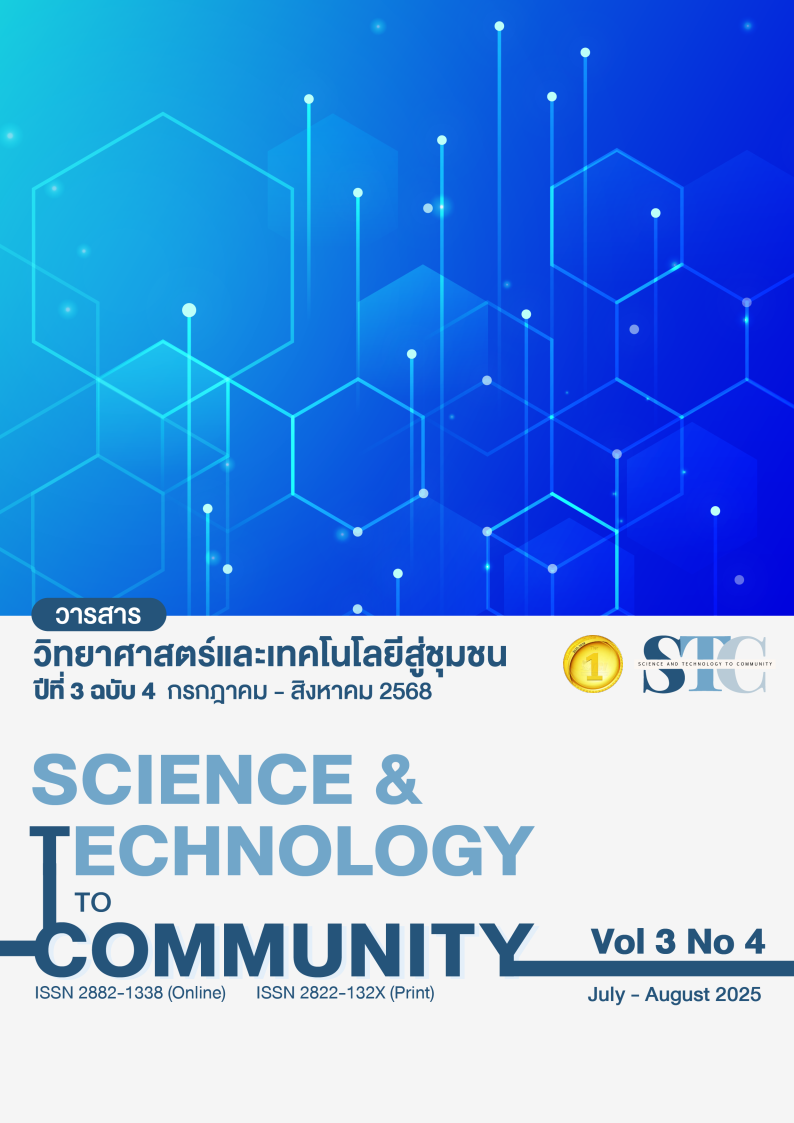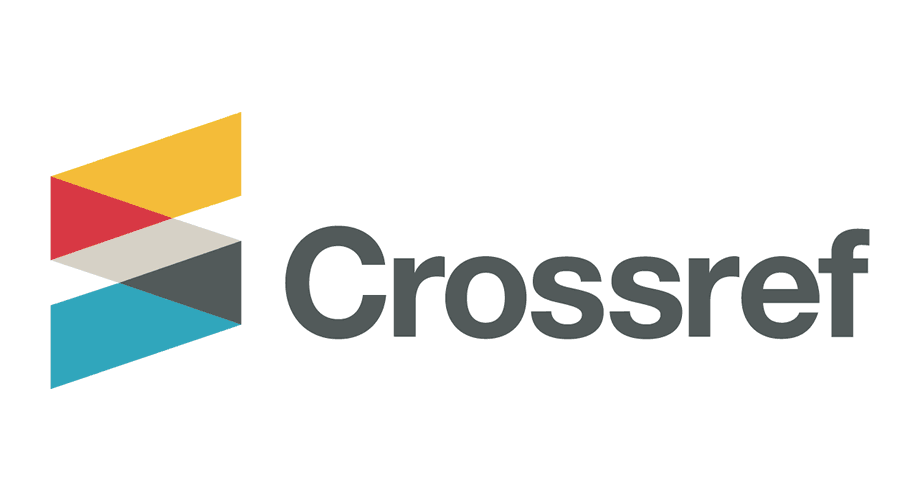The Results of Developing an Educational Model using the Kap Model for Caregivers of Psychiatric Patients at Song Dao Hospital, Song Dao District, Sakon Nakhon Province
DOI:
https://doi.org/10.57260/stc.2025.1116Keywords:
Psychiatric patient caregivers, KAP model, Knowledge, Attitude, Caregiving skillsAbstract
This was a Mixed Methods research. The objectives were to compare the levels of knowledge, attitude, and practice in caring for psychiatric patients among family caregivers, and to study the effect of a knowledge-development model using the KAP model for caregivers of psychiatric patients at Sawng Dao Hospital, Sawng Dao District, Sakon Nakhon Province, under the continuous quality process concept of PDCA. The sample group consisted of 15 psychiatric patient caregivers, selected by purposive sampling, and 6 system developers in the area of Sawng Dao Hospital, Sawng Dao District, Sakon Nakhon Province. Data analysis used descriptive statistics, namely mean, standard deviation, and the Paired t-test.
The results of the study found that after joining the program, the levels of knowledge, attitude, and practice of the caregivers improved with statistical significance (p < 0.05). The knowledge level increased from a moderate level to a high level, with the mean score increasing from 11.53 to 17.80 (t = -22.07, p < 0.001). The attitude level changed in a positive direction, with the mean score increasing from 2.85 to 4.37 (t = -59.18, p < 0.001). The practice level in caregiving significantly improved, with the mean score increasing from 3.00 to 4.59 (t = -67.13, p < 0.001). The caregivers had more confidence in caring for patients, could provide encouragement, social assistance, and follow up on patients' symptoms more effectively. Additionally, their stigmatized attitudes towards patients decreased. Caregivers had a more positive view and could better promote the patients' coexistence in the community. This study shows that the KAP Model is an effective guideline for developing psychiatric patient caregivers by helping to increase knowledge, reduce stigma, and improve caregiving practice for the better. However, long-term follow-up should be done to evaluate whether the results can be sustained, including developing additional learning resources or community networks to make psychiatric patient care more sustainable.
Downloads
References
กรมสุขภาพจิต กระทรวงสาธารณสุข. (2563). คู่มือการดูแลผู้ป่วยจิตเวชที่มีความเสี่ยงสูงต่อการก่อความรุนแรงสำหรับสถาบัน/โรงพยาบาล สังกัดกรมสุขภาพจิต. กรุงเทพฯ: บริษัท พรอสเพอรัสพลัส จํากัด. สืบค้นจาก https://mhso.dmh.go.th/fileupload/202010061612167390.pdf
กำทร ดานา. (2564). การพัฒนาบทบาทการดูแลผู้ป่วยจิตเวชของครอบครัวและภาคีเครือข่ายในชุมชน.วารสารวิชาการสาธารณสุข, 30(3), 406-414. สืบค้นจาก https://thaidj.org/index.php/JHS/article/view/10199
งานเวชระเบียน โรงพยาบาลส่องดาว. (2563-2565). รายงานสถิติผู้ป่วยประจำปี 2563-2565. สกลนคร. งานเวชระเบียน โรงพยาบาลส่องดาว.
รัศมี ชุดพิมาย. (2565). การพัฒนารูปแบบการดูแลผู้ป่วยจิตเวชเรื้อรังกลุ่มเสี่ยงในชุมชนด้วยกระบวนการมีส่วนร่วมของภาคีเครือข่าย อําเภอลําปลายมาศ จังหวัดบุรีรัมย์. วารสารศูนย์อนามัยที่ 9, 16(3), 851-867. สืบค้นจาก https://he02.tci-thaijo.org/index.php/RHPC9Journal/article/view/258728
สุเทพ พลอยพลายแก้ว, นิษฐา หรุ่นเกษม, อรนุชภาชื่น และ ศักดิ์ชาย เพ็ชรตรา. (2556). การพัฒนารูปแบบการดูแลสุขภาพตนเองของชุมชนจังหวัดลพบุรี. วารสารพยาบาลทหารบก, 14(1), 61-70. สืบค้นจาก https://he01.tci-thaijo.org/index.php/JRTAN/article/view/8725
สํานักส่งเสริมและพัฒนาสุขภาพจิต กรมสุขภาพจิต. (2567). คู่มือวิทยากรจัดกิจกรรมสร้างสุข 5 มิติ สําหรับผู้สูงอายุ. กรุงเทพฯ: บริษัท บียอยด์พับลิสซิ่ง จำกัด.
ภัครินทร์ ชิดดี, สุจริต ทุมจันทร์, เพชรศรี สารรัตน์, อัชรา พิลาทอง, พิสมัย ทิพย์วารี และ ดาราพร สิงห์ทอง. (2563). การพัฒนารูปแบบการดูแลผู้ป่วยจิตเวช โรงพยาบาลอำนาจเจริญ จังหวัดอำนาจเจริญ. วารสารวิชาการสาธารณสุข, 29(3), 489-496. สืบค้นจาก https://thaidj.org/index.php/JHS/article/view/9208
ลำเจียก กำธร, โสภิต สุวรรณเวลา และ เนาวรัตน์ สิงห์สนั่น. (2561). ปัจจัยทำนายพฤติกรรมการดูแลของผู้ดูแลผู้ป่วยจิตเภทเรื้อรังที่บ้าน. วารสารโรงพยาบาลมหาสารคาม, 15(3), 114-125. สืบค้นจาก https://he02.tci-thaijo.org/index.php/MKHJ/article/view/196181
หทัยกาญจน์ เสียงเพราะ. (2564). การพัฒนารูปแบบการดูแลผู้ป่วยจิตเวชที่กลับมารักษาซ้ำโดยการมีส่วนร่วมของชุมชน. วารสารการแพทย์, 36(2), 413-426. สืบค้นจาก https://he02.tci-thaijo.org/index.php/MJSSBH/article/view/252861
อมาวสี อัมพันศิริรัตน์ และ พิมพิมล วงศ์ไชยา. (2560). การวิจัยเชิงปฏิบัติการแบบมีส่วนร่วม : ลักษณะสำคัญ และการประยุกต์ใช้ในชุมชน. วารสารมนุษยศาสตร์ มหาวิทยาลัยมหาสารคาม, 36(6), 193-200. สืบค้นจาก https://hujmsu.msu.ac.th/pdfsplit.php?p=MTU5OTAxNDE3NC5wZGZ8MjAxLTIxMQ
Brown, J. S., & Duguid, P. (1998). Organizing Knowledge. California Management Review, 40(3), 90-111. Retrieved from https://cmr.berkeley.edu/1998/05/40-3-organizing-knowledge
Deming, W. E. (1986). Out of the crisis. Cambridge. MA: Center for Advanced Engineering Study, Massachusetts Institute of Technology. Retrieved from https://www.scirp.org/reference/referencespapers?referenceid=590925
World Health Organization. (2019). Mental health and psychosocial well-being. Retrieved from https://www.who.int/publications-detail/mental-health
Zhang, W., Wu, X., Li, M., Wang, G., Liu, Y., Zhang, X., & Zhang, L. (2024). Knowledge, attitudes, and practices among medical students toward depression management: a cross-sectional study in China. Frontiers in public health, 12, 1429943. https://doi.org/10.3389/fpubh.2024.1429943
Downloads
Published
How to Cite
Issue
Section
License
Copyright (c) 2025 Science and Technology to Community

This work is licensed under a Creative Commons Attribution-NonCommercial-NoDerivatives 4.0 International License.
1. Articles, information, content, images, etc. that are published in "Science and Technology for Community Journal" is the copyright of science and Technology for Community Journal. Chiang Mai Rajabhat University. If any person or organization wants to distribute all or any part of it or do any action Must have written permission from the science and Technology for Community Journal, Chiang Mai Rajabhat University.
2. Content of articles appearing in the journal is the responsibility of the author of the article. The journal editor is not required to agree or take any responsibility.














